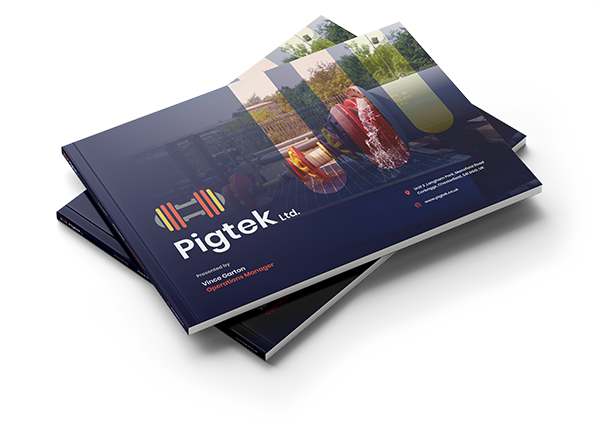Pipeline Cleaning
Pigtek personnel understand and are familiar with the challenges and logistics that pipeline operators are faced with when undertaking any pigging operation. We take a “hands-on” approach and have been involved in managing many pipeline cleaning operations.
Pigtek adopt a progressive approach for cleaning pipelines to minimise the risk of a pig becoming stuck or the pipeline becoming blocked with debris. Typically, a progressive operation for the cleaning of a pipeline would be as follows:
Stage 1 – Pipeline Proving
- To establish whether or not a pig can pass through the pipeline from the launcher to the receiver
Stage 2 – Pipeline Gauging
- To establish the size of any restrictions within the pipeline
Stage 3 – Initial Pipeline Cleaning
- Loose debris removal
- Liquid removal
Stage 4 – Advanced Pipeline Cleaning
- Dust removal
- Ferrous debris removal
- Scale and hard wax removal
Depending on the age, the previous pigging history and internal condition of the pipeline, it may not be necessary to perform all stages of the progressive cleaning programme, and in some case it may be possible to combine stages. Pigtek have a detailed pipeline questionnaire that is essential in establishing how a cleaning pipeline programme should be structured.
Pig selection for performing the various stages of a progressive cleaning programme is extremely important, as running an over aggressive pig too soon could cause the pig to become stuck. This may due to an unknown mechanical feature such as a dent, heavy wall section, tight bend radius, intrusion into the pipeline etc. Alternatively the pig may have removed too much debris too soon. The results of each pig run should be carefully assessed before selecting the next pig type to be run through the pipeline.
Heavy-Duty Pipeline Cleaning Pigs
Whilst the presence of debris such as wax, scale, sand, sludge and dust in a pipeline may be at a level that is low enough to be acceptable from an operational point of view, it is better to have no debris at all. Any debris that is left in a pipeline may allow corrosion to develop and grow beneath it. Even if corrosion inhibitors are injected into the pipeline, they may not be able to perform effectively if debris is preventing them from making contact with the pipewall.
If dry dust or black powder is left in a pipeline then there is the possibility that it may gradually move towards the end of the line. If this occurs then filters can suddenly become blocked and cause a pipeline shutdown. Therefore, advanced pipeline cleaning should be seriously considered for maintaining optimum pipeline conditions.
 Pigtek Ltd
Pigtek Ltd
